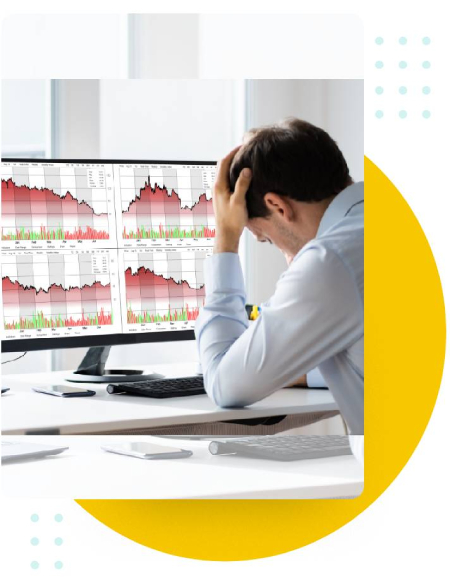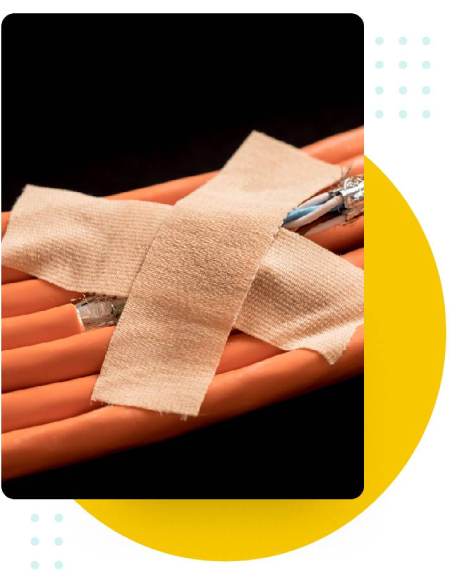Looking for the ultimate solution that doesn’t only help you manage your dead stock but also make sure that there is as little dead stock as possible? A dead stock inventory management software is the answer.
A dead stock inventory management software can help you amalgamate all the aforementioned best practices, so that you can establish a robust system of dead stock inventory and can effectively avoid having surplus inventory in place to slow things down.
Why You Should Use an Inventory Management Software for Dead Stock Management
We have already discussed at length how bad inventory management is one of the biggest reasons behind dead stock in inventory management becoming a problem. With inadequate inventory management mechanisms in place, you cannot expect your business operations to evolve without the presence of dead stock.
In the 21st century, it would not be wrong to say that “bad” inventory management is more or less synonymous with manual, physical inventory. This is because the competitiveness and the fast pace that the business world operates on in today’s day and age can only require companies to rely on technology and automation as far as they can.
So, the best option for you is to go for an inventory management software that will not only help you deal with dead stock, but also ensure that your operations remain competitive and can give your competition a run for their money.
Save yourself from bad inventory with a good inventory management software and watch your dead stock problem simply disappear!
General Benefits of an Automated Inventory
Other than that, there are many other benefits of automated inventory management software:
- It helps you save money.
- It helps you save time.
- It improves supplier relations.
- It boosts employee retention.
- It maximises workplace productivity.
- It empowers your deadstock warehouse.
- It helps you with order management.
- It enables you to make data-backed decisions.
- It helps you upscale your business faster.
- It provides a future-friendly, long-term inventory management solution.
For these reasons and many more, it becomes important for you to look into automated inventory. You will be making your job easier as well as ensuring that you are not leaving a loophole for the dead stock in inventory management situations to get out of hand.
Picking the Right Inventory Management Software for Dead Stock Management
However, picking the right inventory management software is not as easy as it sounds. This is mainly because there are many options available in the market and it can be quite a hassle when it comes to deciding which one aligns the best with your operations.
To make things easier for you, here’s a step-by-step guide to pick just the right inventory management software that can help you deal with surplus inventory as well as ensure that the other aspects of inventory management are also properly streamlined:
1. Look for the right features.
As mentioned earlier, there are many options available in the market when it comes to inventory management. As such, there are hundreds of features that you can find in the market. However, the trick, when it comes to finding a software that helps you deal with dead stock in inventory management, is to look for features that align with your business.
For example, if you are a large-scale business with multiple kinds of products going in and out of your warehouse, you should focus on finding a solution that can give you real-time visibility of a lot of stock at once. Similarly, let’s say you figure out that the main problem you are dealing with as a business is ordering inaccuracies. Ideally, you should look for a software that deals with that issue and helps you place your orders more efficiently.
2. Make sure it supports your operations.
In this regard, it is quite important for you to ensure that the software is advanced enough to deal with your operations. For a large scale business, this would mean that you should look for a more technologically evolved solution. However, since a small business is not likely to have a very complicated supply chain, for them, it would be better to look for a solution that is simple to use but offers scalability.
3. Check your budget.
For the right price, you can get whichever inventory management system you like. But in order to ensure that you are actually investing in a long term solution that can be used regularly to fix your inventory management solutions, you must look for a software that fits your budget.
A good inventory management software is an investment, but it’s better to stay within your financial constraints instead of going over the top in terms of your budget, since that is not feasible long term.
In order to deal with the problem of dead stock effectively, you need to make sure you are choosing the right dead stock inventory management system. If you choose one that doesn’t align with your needs as a business, it will not do you any good. Instead, it will further complicate things for you, and you don’t want that while dealing with a problem as serious as dead stock.















